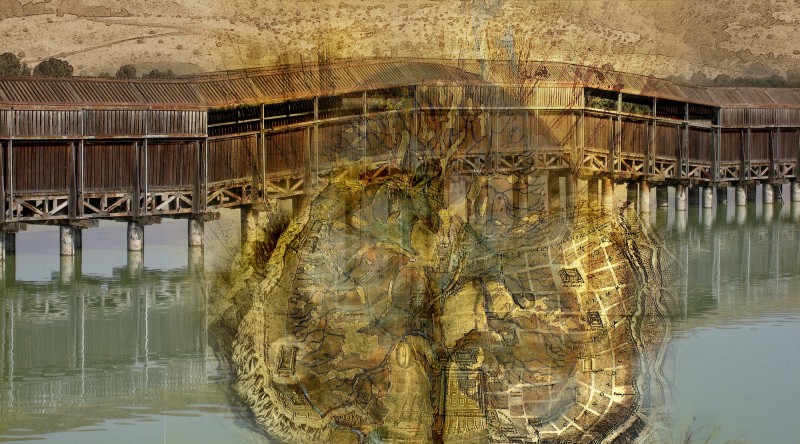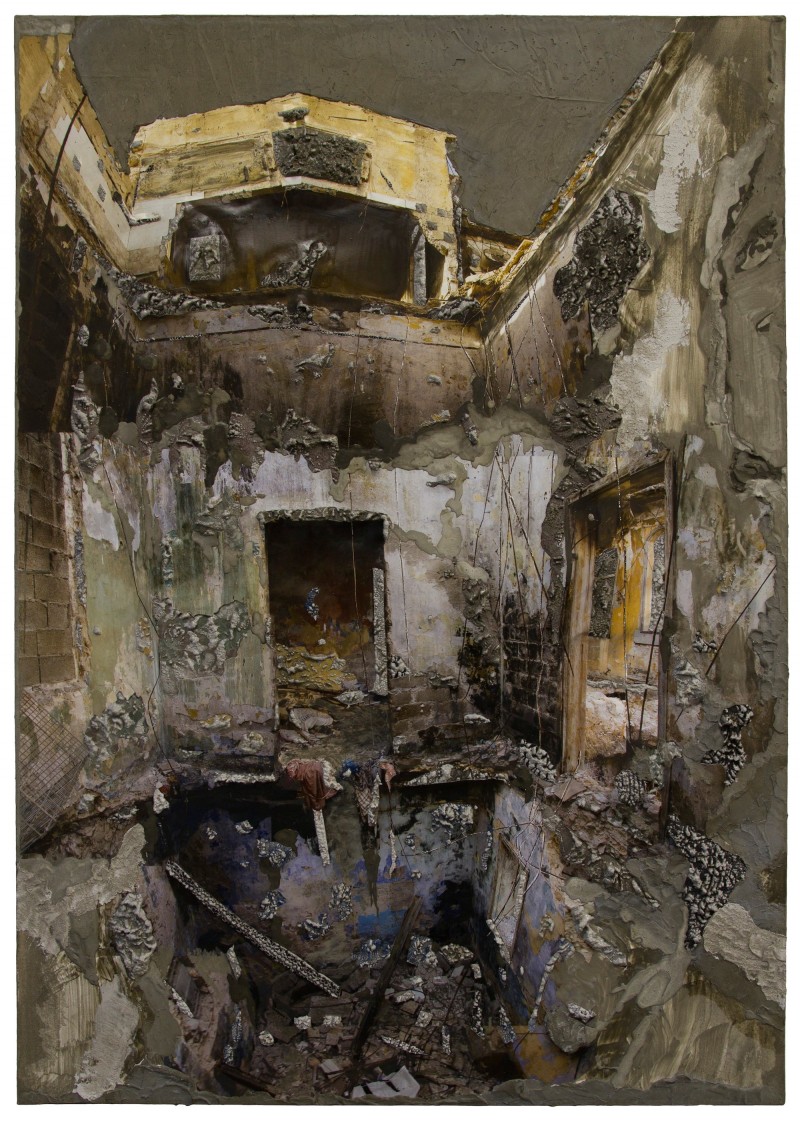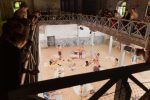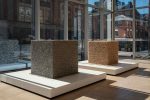Visions of Place: Complex Geographies in Contemporary Israeli Art is a large exhibition both in number of objects and the all-encompassing diversity of viewpoints that we see here. Six of the 36 Israeli artists in the exhibit have previously shown in the Venice Biennial, but to most visitors the majority will be unknown. There is a satisfying sense of discovery at every turn in this contemporary survey exhibition.

The show, on view at Rutgers Camden Center for the Arts, includes 52 works, none of which is older than 2005. Some items were made specifically for this exhibition, which was organized over the course of four years by curators J. Susan Isaacs and Martin Rosenberg.
Show strengthened by diversity
Visions of Place writes in real time a survey of some compelling Israeli artists working today. It makes good sense that such a large number of artworks are organized into categories as they are in the richly illustrated catalogue, the fantastic accompanying website, and in the exhibition itself. The categories formed around the curators’ ideas about primary themes in Israel and Israeli art: history, geography, people, interventions, and diversity. In the tight areas of the Center for the Arts’ Stedman Gallery, however, the parameters of the thematic sections are not always crystal-clear. The works flow through and fill the entire space without pause.
A great strength of the curatorial approach overall is the dedication to representing a variety of artists who reflect the vibrant diversity and population statistics of modern Israel. Artists who are Muslim, Bahá’í, Christian, Druze, gay, straight, conservative, and liberal are all here; the majority of the artists are Jewish. Diversity and identity are consistent elements in many works in Visions of Place, the most impactful of which is a video titled “(Sa)Mira” (2008-09) by the artist and filmmaker Dor Guez. We learn in the exhibition catalogue that Guez has Tunisian-Jewish and Arab-Christian parentage and his work often explores “prevailing meta-narratives” about dominant and marginalized identities.

In “(Sa)Mira,” we see Guez’s niece, Samira, recount a workplace incident in which restaurant customers complained about being served by her because she is Arab. This in turn prompted her boss to request that Samira adopt a different name in the workplace; they eventually decide that she will be “Mira”. When I first see Samira in the video, any stereotypes I may have about what a person with Arab heritage looks like are not evident. I pegged Samira as Jewish-Israeli, as she is indistinguishable from any blue jean-clad, tank-top wearing, cosmopolitan, Hebrew-speaking women one may encounter in Tel Aviv. Of course this is the point of the film: Samira is indeed all of these things and is Arab, too. She describes herself as a person who “feels both, and is culturally both”. However, the issue of her Arab heritage soon becomes the central, emotionally dramatic story as we watch her move from seeming indifference about the name change to tears. It’s clear that being asked to change her name is not only offensive, but smacks of a racism that scrutinizes and threatens her identity and even her right to belong in her own country. That her approved work name of Mira is only a two-letter difference from her real name is particularly profound. Can two letters really move someone from Other to One of Us? This small difference may be like Duchamp’s proposal of the infrathin—a way of contemplating how two different things can be almost indistinguishable from each other. The two-letter modification also seems to underscore that no matter the similarities, it’s always the tiniest of differences around which racism draws its ruthless dividing lines. See the video here.
No single answer
An effective foundational underpinning of this exhibition is how so many of the Israeli-specific works are also universal and familiar. Naomi Safran-Hon’s multimedia piece, “Wadi Salib: Hallowed Home” (2014) hits this note dramatically. This rough, cement- and lace-layered print shows the ruined outlines of a domestic structure from the Wadi Salib neighborhood in Haifa. This area was once a location for Arab and then Mizrahi Jewish inhabitants, both of whom were forced to leave due to various regional wars and political oppressions. Safran-Hon’s hallowed home is now a ghostly testament to history itself, and more dramatically, to all the missing and displaced people who once lived here. Looking at this rough and dusty artwork, it’s impossible not to see the similarities between what Safran-Hon is showing us and the devastating before-and-after images of neighborhoods in Syria. Indeed, this hallowed home could be the former dwelling of any of the 60 million displaced people on our planet today. Naomi Safran-Hon will have a solo exhibition of her work at Goucher College in January 2016 as part of the extended programming in support of the Visions of Place tour schedule.
It will be no surprise that the land itself is also a primary subject for several Visions of Place artists, as Israel’s topography is a site of both celebration and contestation. Toby Cohen’s joyful “Sunrise at Masada” (2008) is an 8-foot-long digital print of the sun rising over the vast landscape and sea beyond. In the print, we see three men in the foreground joyfully embodying in dance and movement the divine natural drama unfolding before them, and, like with any large, Romantic panorama, the viewer also experiences the impact of this sublime scene. But despite the seemingly infinite and uninterrupted expanse in Cohen’s image, the land that is the focus of this exhibition is in so many places disputed, divided, and environmentally unstable.
Dorit Feldman’s layered, mixed-media atlas of maps and poems are contemplations on Zionism, geography, and geology. Like deep layers of ancient land, Feldman’s works do not readily give up their meanings. It takes some excavating and engagement to way-find through the many references in Feldman’s “About to Be: A New Land” (2011). Fortunately, additional examples of this noted artist’s work are also on view in a solo exhibition at the Gershman Y in Philadelphia through Dec. 10, and there it’s possible to unearth more systematically Feldman’s rich imagery.
No work in this exhibition is simple, though, because ultimately what we see in Visions of Place are items made by complicated humans who happen to live in a politically complex place. The curators’ scholarly but big-hearted approach supports a knotty multiplicity as if suggesting that when considering Israel and its artists, there is no single or even dichotomous answer as we may be led to believe by political figures, boycotters, or extremists. Rather, there are important possibilities for understanding and connection to be found in the many layers of personal, diverse stories such as those we see in this exhibition.
Visions of Place: Complex Geographies in Contemporary Israeli Art is on view at the Rutgers-Camden Center for the Arts through Dec. 17, 2015. The exhibition will then be on view at the Center for the Arts Gallery at Towson University in Towson, MD from Feb. 5 – April 3, 2016.









